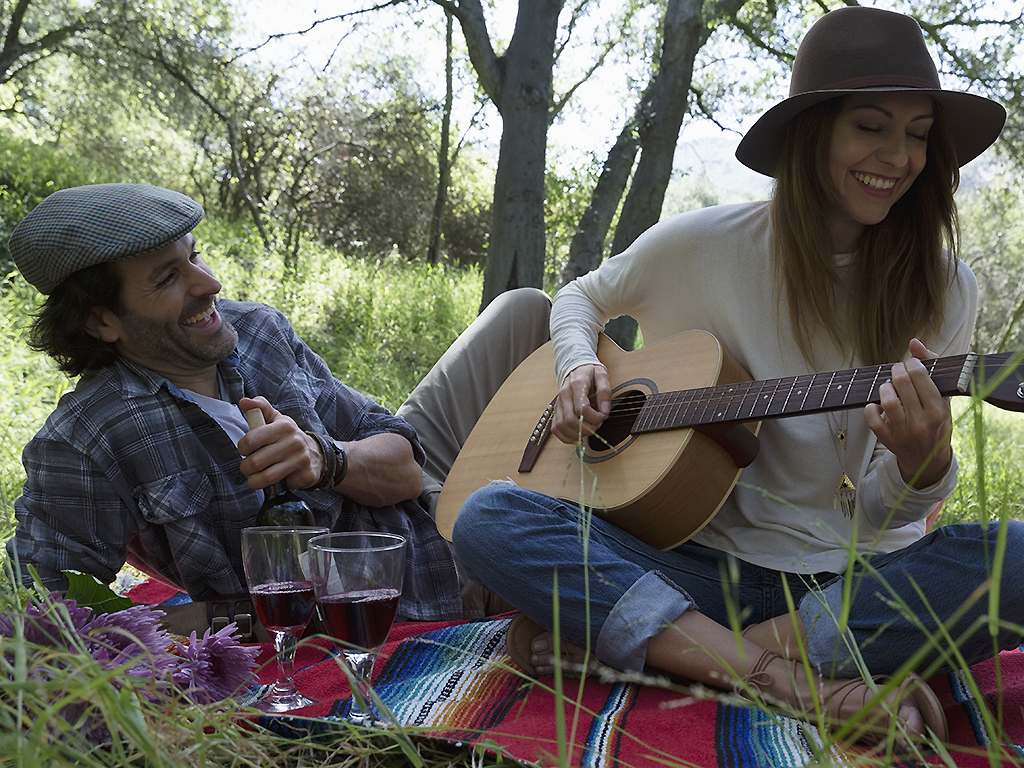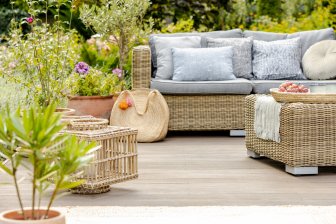It all started with a glass of tomato juice.

On a recent long-haul flight, the man across the aisle ordered up glass after glass of the stuff. Not Caesars or anything with alcoholic content, but straight Heinz juice.
After his fourth serving — I’m guessing, I couldn’t keep track — I was craving one myself. This was strange, given that I never, ever drink tomato juice. I find it too strong, too acidic and in no way refreshing. So why the sudden urge? Maybe I was unconsciously wondering what my fellow passenger was getting out of his experience.
READ MORE: Anthony Bourdain leaves majority of $1.2M estate to daughter
When the flight attendant next came by, I asked for a glass (as did the guy next to me). I took a sip. It tasted… good. Very good, in fact.
This led me down a deep rabbit hole of scientific inquiry into why food and drink taste differently when you’re in an airplane at a high altitude.
Firing up the in-flight wifi, I learned that the lower cabin pressure (the equivalent of an elevation of about 6,000 ft) and the low humidity impact our senses of smell and taste. In order to give food any taste, it’s over-salted and over-spiced (except for curry, which, for some reason, tastes just the same on the ground as it does in the sky).
- Posters promoting ‘Steal From Loblaws Day’ are circulating. How did we get here?
- Video shows Ontario police sharing Trudeau’s location with protester, investigation launched
- Canadian food banks are on the brink: ‘This is not a sustainable situation’
- Solar eclipse eye damage: More than 160 cases reported in Ontario, Quebec
But I also discovered something more. The drone of the engines also affects our sense of taste.
This I could test immediately. When dinner service commenced, I pulled out the noise-cancelling headphones, but didn’t put them on. I tasted everything on my tray, noticing all the sensations and spicing. Then I slipped on the headphones and took a few more nibbles. The difference was remarkable: The sauce was far too salty but the fruit was suddenly more, well, fruity and the chocolate sweeter. Fascinating.
READ MORE: Chris Brown arrested for felony battery in Florida
A few weeks later, I got a call from Noble Wines. Would I be interested in hosting some kind of event involving wine and music? And if so, what would I want to talk about?
“I have just the thing,” I said, remembering my tomato juice experience. “Let’s conduct an experiment in pairing wine with the right music.”
I immersed myself in research about how music affects our sense of taste and other behaviours when it comes to food and drink.
I learned:
- Loud up-tempo music in a restaurant makes us eat faster. Science says faster music actually increases our chewing speed. Restaurants often employ this trick over lunch to encourage a higher table turnover
- The subtle stress caused by uptempo music can tempt us towards cheeseburgers and fatty comfort foods. Conversely, restaurants playing chill music cause us to pause long enough to consider having that mixed greens salad with dressing on the side
- The right music can cause us to eat and drink more by encouraging us to linger longer
- Sound changes our perception of food. Low-frequency audio enhances bitterness while the sweetness of just about any food can be increased just by playing audio featuring tones to the right of middle A
So what about music and wine? I set about creating a wine-tasting playlist (which you can listen to below) using research from the psychology department at Oxford University. The boffins there had done work with alcoholic beverages, discovering that stronger, spicier, and more complex tastes were easier to pair with low bass sounds. Sweetness and delicacy came through (as well as the sweet/sour notes of lemon and other citrus flavours) with high notes.
Armed with a carefully curated selection of music, I headed off to the event, not knowing (a) if this would work at all; and (b) that the room would be full of professional wine tasters, writers, vineyard people, and sommeliers.
Wines were tasted one at a time: once in silence and then again with two different types of music playing in the background. Here’s a sample of what happened (and thanks to Jay for keeping such good notes).
Delaporte Sancerre Rouge
- Dream a Little Dream of Me by Ella Fitzgerald and Louis Armstrong: This is an older recording where higher frequencies are most pronounced. As soon as it started playing, the wine acquired a new freshness with bright red fruit
- Get Lucky by Daft Punk: There’s a tight, low bassline. The Sancerre turned slightly bitter while much of the fruit flavour was greatly diminished
13th Street Cuvée Premiere 2012
- Don’t Know Why by Norah Jones: Downtempo female vocals with jazzy acoustic ensemble support. The wine turned sweeter, richer, and fuller in every way
- Girls Girls Girls by Mötley Crüe: Bitter. Hollow. Devoid of fruit flavour
Planeta Nero DAvola
- The Melody by Carl Craig et al: Chillout techno beats with plenty of deep bass: “Whoa! Smell and taste that alcohol!”
- At the Hundredth Meridian by the Tragically Hip: Longer finish, less alcohol perception, less pronounced fruitness
Paxton Shiraz
- I Will Wait by Mumford and Sons: Lots of berries and sweetness with pronounced aromas
- Holding Back the Years by Simply Red: Sour and lots of tannins
Again, nothing changed with each wine other than the music being played. There were plenty of audible gasps, too, as everything about the wines was altered by the music.
The tasting of one wine — I forget which — began with the playing of Lowdown by Boz Scaggs, which starts with a 9-second drumbeat intro. There was an exclamation from someone in the crowd when the music kicked in.
“The aroma of the wine changed instantly! As soon as the song moved from the drums to the music, it smelled entirely different!” (This guy knows his stuff, too. He’s the sommelier at one of the best and most-respected high-end restaurants in Toronto.)
READ MORE: James Woods’ talent agent drops him on 4th of July
When it was all over, everyone gathered to discuss our findings. “I had no idea,” said one writer. “I’m going to have to be much, much more careful with what music is playing when I have people over for dinner.”
Another said she was going to speak to the owner of her restaurant about a need to be careful with its musical selections.
In the end, we agreed that this exercise was a perfect way to justify day drinking (the event ran from 1-3 p.m. on a Tuesday) and that this would make for a great formal event for guests at restaurants, bars, vineyards, distilleries, and breweries. Most of all, we agreed that more experiments were necessary. Everyone volunteered to be research subjects.
—
Here is the playlist I used. Feel free to have fun with it. Report back any results, OK?
—
Alan Cross is a broadcaster with 102.1 the Edge and a commentator for Global News.
Subscribe to Alan’s Ongoing History of New Music Podcast now on Apple Podcast or Google Play






Comments